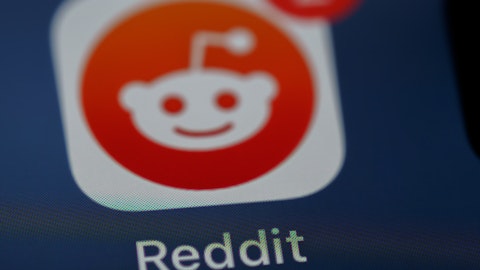Operator: Thanks. Next, we have Mike from Needham.
Mike Cikos: Hey, thanks for taking the question, guys. I just wanted to circle up and I know that you guys aren’t quantifying what the intended benefit to revenue is from the announced price increase for Premium, but maybe for historical context. Can you help us think about what the deprecation of the starter package did as far as the contribution revenue, again, just to help us kind of level-set or think through how this price increase will phase in over time?
Brian Robins: Yeah. Thanks, Mike. On starter, just to update everybody, we have slightly over $1 million of ARR on starter, so we’re almost completely through that transition. But the way that starter happen was about two-thirds went up to Premium and a third either went to free or churned. As you know, when we did the starter deprecation, we actually offered a slow increase of price if you met certain requirements. And so the majority of our customers fell under that. And so it went from $4 to $6. And so two customers at $6 versus $3 and $4, it was really the same revenue impact and we didn’t get much of a financial lift in year one from the start of deprecation.
Mike Cikos: And then a follow-up if I could, but I know that you guys announced the way of reductions. You made the tough decision there. Is there a way we can think about what those anticipated savings are to the company and the construct of the, call it, negative 12% operating margins you were calling out or negative 6% if we exclude the $33 million in expense from JiHu?
Brian Robins: Yeah. I guess when we take the charge for that, that would be roughly around $9 million give or take.
Mike Cikos: Understood. Thank you.
Brian Robins: Yeah. Thanks, Mike.
Operator: We’ll now hear from Nick at Scotiabank.
Nick Altmann: Great. Thanks. Just trying to understand some of the assumptions around the guidance. Just going off of Rob’s question, I think you guys said gross retention was sort of in the low to mid-90s. I guess when you look at the guide for this year, what does that sort of embed for gross retention? And then as a follow-up, historically you guys have talked about how two-thirds of expansion really comes from seat growth. And so can you maybe talk about what level of seat growth is embedded in that 26% guide?
Brian Robins: Yeah. So we obviously don’t give like all the details of the model but I can go through a lot of the characteristics that we — or a lot of the things that we thought about in building out the guidance. So first let me talk about the net dollar retention rate. Seat growth is still the number one contributor to the net dollar retention rate, followed by tier upgrades and then price yield and so that hasn’t changed that much. Seat growth, two or three quarters ago was about two-thirds. That’s down to around 50% now and then the other to make up the remaining 50%. And so, as we went through guidance and we looked at — in basically large mid-market and SMB, we looked at pipeline, deal size, conversion rates. We looked at our contraction churn and basically built up the model from the bottoms up based on what we saw in fourth quarter and the beginning of first quarter.
Operator: Next we have Pinjalim from JP Morgan.
Pinjalim Bora: Hello. Great. Hey, thank you so much, and best wishes Sid for your health. Brian, maybe one question on the price increase again. Anyway to understand — I know you saw above one-third churn in the starter deprecation. Are you assuming a somewhat similar kind of churn level at this point for the Premium price upgrade here? And how should we think about that starter deprecation plan because there is supposed to go from six to nine to 15 to 19 right now so that 19 be basically 29, and 15 going to 29 directly?
Brian Robins: Yeah. So on the starter package, they go from six to nine. And I’m sorry, what was the first question? Could you just repeat that?
Pinjalim Bora: The churn portion what was one-third. Are you assuming something similar for the Premium price increase?
Brian Robins: Yeah, churn. We’ve built out a model to say from new business will we have the same close rate, will it take the same amount of time for the existing clients that we have, the same thing. And so we did assume some kind of churn. It wasn’t the same exact, but based on the market research that we went through, we did assume some kind of churn.
Pinjalim Bora: But it’s not as high as 33 is what you’re saying?
Brian Robins: We did give out a specific number on that.
Pinjalim Bora: Yeah. Okay, understood. One for Sid, if I can. Sid, what is your vision on kind of the monitor stage of the infinity loop? You acquired Opstrace, but we haven’t heard much I guess on the observability side. How are you thinking about it?
Sid Sijbrandij: Yeah. We still believe there is a huge unmet need for observability, so observability fits in nicely with the rest of the loop. And we’ve been working on distributed tracing, error tracking and product analytics. Those are all shaping at GitLab. What it allows our customers to do is to identify performance issues they have with the specific services, helping them improve the user experience. You can imagine the ability to automatically correlate errors to GitLab incidents to automatically monitor GitLab deployments that is super important. So we are starting with the things that are very close to GitLab, GitLab already does incident management. GitLab already does deployments. We’re focusing the observability there first and making progress there because it adds a lot of value to close that loop with the customer.
Pinjalim Bora: Got it. Thank you.
Operator: Our final question comes from Shebly from FBN.
Shebly Seyrafi: Yes. Thank you very much. So are you considering raising prices on the Ultimate tier as well?
Brian Robins: Yeah. All we announced was the price increase on Premium. We have a pricing group. We look our pricing all the time, but the only decision has been made is the pricing announcement that we made on Premium.





